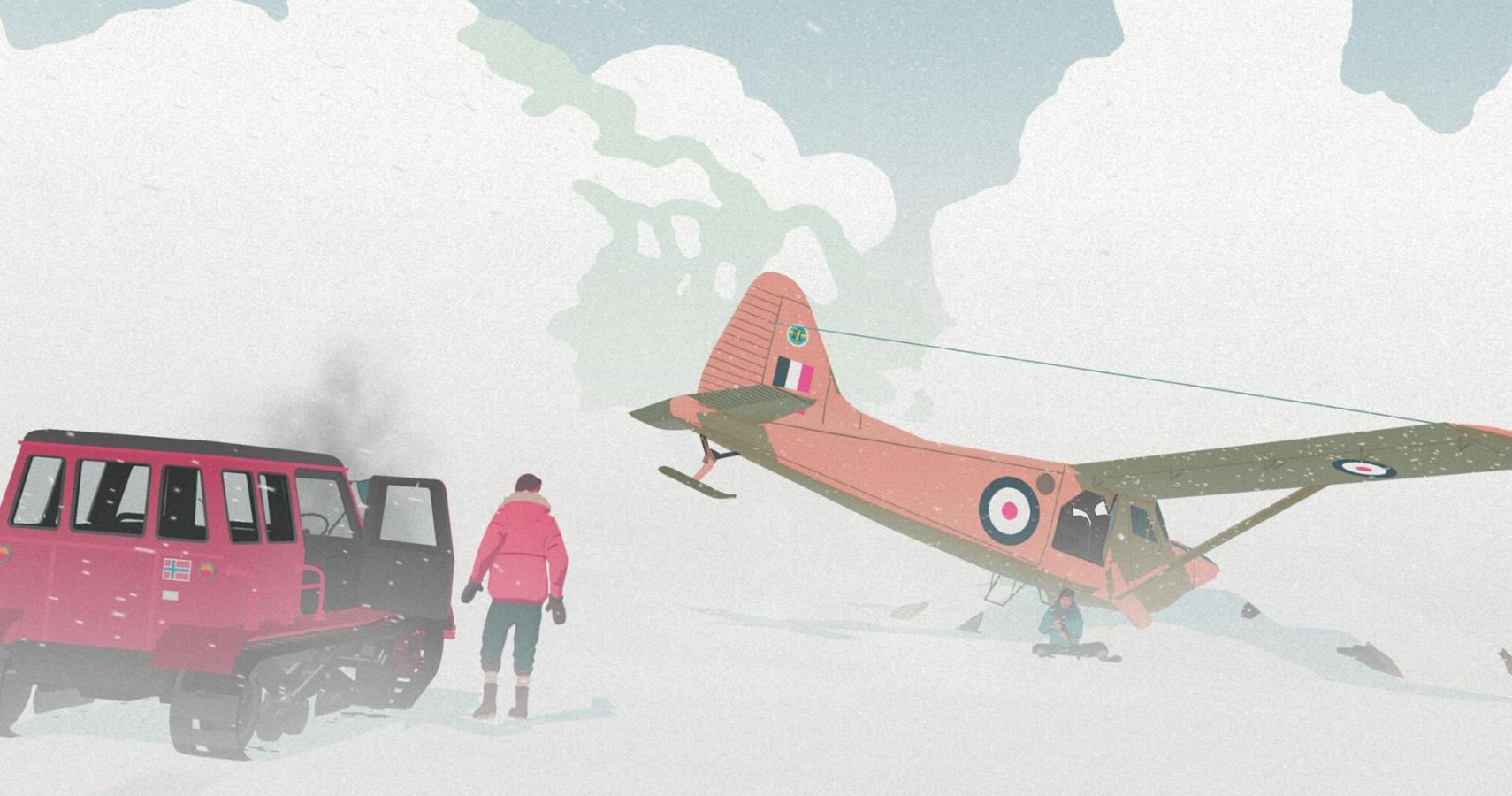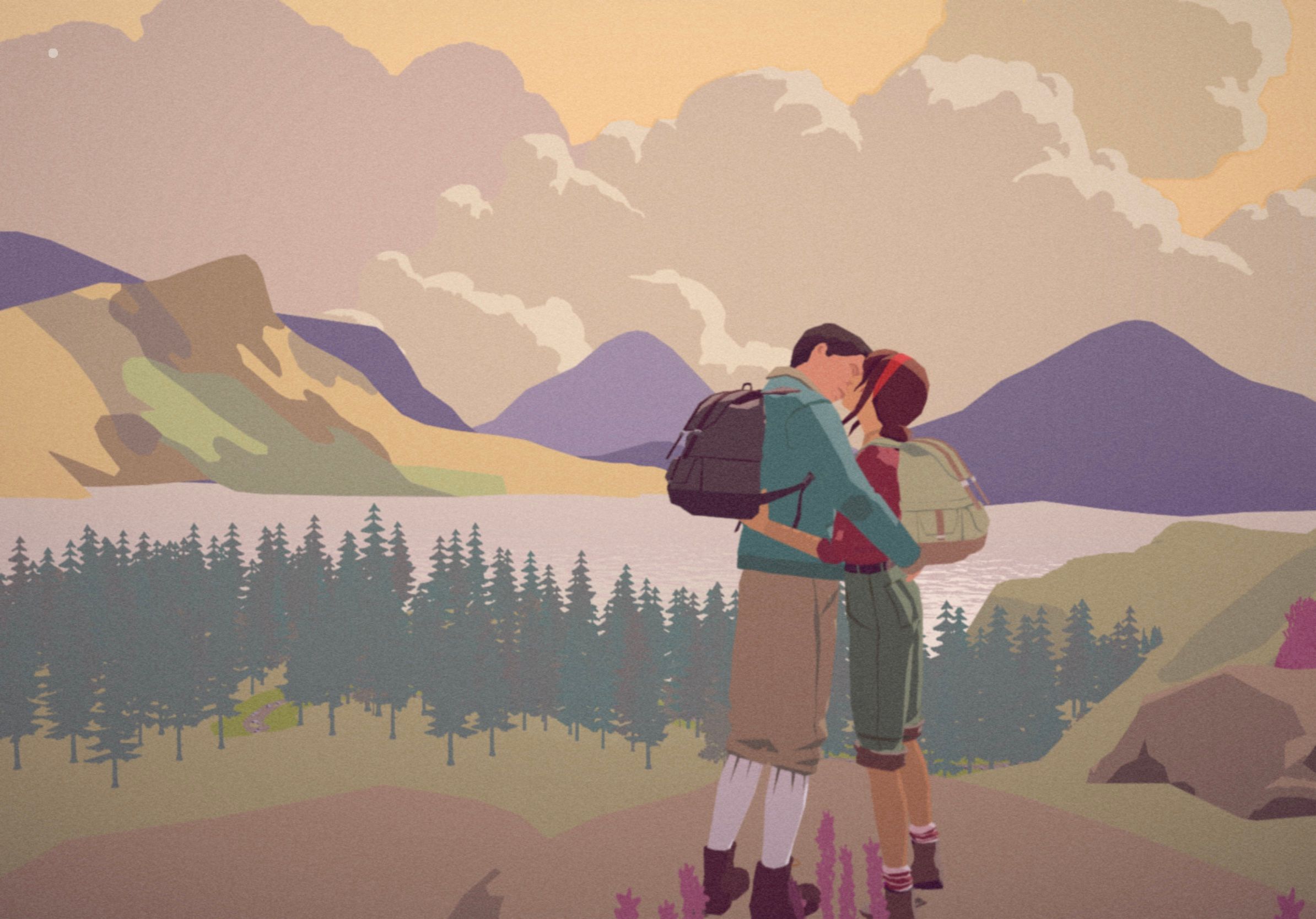Meet The Indie Dev Who Went To Antarctica To Create A Cold War Game About Love
The team at State of Play actually went on a field trip to Antarctica in order to create an authentic story for South of the Circle.
You Are Reading :Meet The Indie Dev Who Went To Antarctica To Create A Cold War Game About Love

While most of us are well aware of the battles fought on European soil during World War 2, the contemporary situation in Antarctica has been scarcely documented. When we think of the South Pole, our minds often wander to revered adventurers like Roald Amundsen or Robert Falcon Scott. But there’s much more to Antarctica than its famed expeditioners, and South of the Circle is specifically designed to extrapolate that.
“I was reading The Incredible Adventures of Kavalier and Clay, about two Jewish cousins fleeing from Europe before World War 2,” State of Play co-founder and creative director Luke Whittaker tells me. “One of them ends up posted to Antarctica during the war and, with a loaded gun in hand, encounters a German scientist on the ice.
“The fact it was Antarctica posed a fascinating question: Would he shoot? Would you? Away from the structures we all live in, stripped of everything, who are we?”
Whittaker explains that, after deciding that South of the Circle was going to be set in Antarctica, State of Play was originally drawn towards the stories of the great explorers mentioned above. However, a friend named Claire Dudeney soon mentioned that her father, John, had spearheaded the British Antarctic Survey back in the ‘60s. Whittaker and the team spent hours chatting to Dudeney, learning all about how technological advancements came decades late to Antarctica, where people still used Morse code and hunted seals with rifles from the first World War. What’s more, the Cold War was at its height, and the South Pole was steeped in geopolitical tension due to overlapping territorial claims between Britain, the US, and the Soviet Union.
“Each country designed their bases in their own ways, and the differences were fascinating,” Whittaker says. “British bases of the era looked a lot like scout huts. Soviet bases were squarer and more modernist in design, American bases more futuristic.”
Whittaker explains that Dudeney provided photographs of the UK’s Faraday Station, allowing the devs to study everything from the images plastered on the walls to the kind of meals people would cook for dinner. Obtaining information about the other countries’ bases was far more difficult, prompting the team to dive deep into the backwaters of academic video archives.
But State of Play could only learn so much from Dudeney’s stories and Google. “The characters needed to be authentic for the narrative to have power, and by extension they needed to be in a believable place,” Whittaker tells me. “It would have been easy to design an Antarctica based on what we could see in Google Images, but it wasn’t enough. It was important it felt right, whether you had been there or not. The only way I felt like we could do that was by taking a trip ourselves.”

And so the team flew to King George Island, south of Chile, and boarded an old Russian science vessel in order to embark on an excursion around the Antarctic peninsula – they even brought former British Antarctic Survey chief John Dudeney along as a scientific advisor. For three weeks, they sailed back and forth from the main rig in smaller boats, allowing them to explore further inland. Armed with sketchbooks, audio recorders, and video cameras, they set out to document their firsthand experiences from the South Pole.
“The landscape is far more varied than I imagined,” Whittaker explains. “There’s a sunken volcano at Deception Island – so called because the only way to sail a boat in was hidden out of sight for years – and the landscape is silty, black, and strewn with rocks, with steam rising from the sea. We learned how in certain conditions when the sun is low the entire world can turn pink.
“We climbed inside that sunken volcano, explored the caldera where an old whaling station sits rusted and sinking into the silt, climbed high above glaciers and watched the head of them – as big as a skyscraper – break away with a crack like an explosion and crash into the sea. We saw faint outlines of huts on the coast, when it was too foggy and icy to land. Many of these sights made it into the game.”

The implementation of these scenes was similarly unique. Whittaker wanted South of the Circle to look and feel like the mid-century, Cold War era it was set in, while still somehow maintaining a degree of timelessness. To accomplish this, he turned to screenprints his grandfather had designed, focusing on the colour palettes and compositions that dated them without compromising their ability to transcend the temporal.
This methodology also allowed the team to carve out a distinct style that was conducive to their thematic outline. By focusing on monoprints – a low-tech way of printing that simply requires a board, ink, and paper – State of Play was able to pare back the visuals to what was strictly necessary for telling South of the Circle’s story. Like a theatre set, Whittaker and the team focused on highlighting the important things you need to know, intentionally leaving gaps for your imagination to fill. The fact so few materials were needed for this style also meant that the team could do their prints on the boat, permitting them to indulge in immediate artistic expression instead of being forced to remember details after the fact.
But again, all of this natural sublimity is at all times underscored by the relatively unknown history of Antarctica itself. South of the Circle is gorgeous, its vast snowscapes and mountain outlines being specifically designed to pull you into this world in a way that emphasizes intuition and feeling over an intellectual narrative experience. At the same time, this is based on Cold War geopolitical tensions that are seldom discussed in the mainstream media. While State of Play certainly appreciated the beauty of the South Pole during the research trip, the people there also learned just how significant Antarctica is in the wider context of the world.

“One of the biggest surprises was learning about the Antarctic Treaty,” Whittaker tells me. “It’s unlikely that many people know about it, and they should. It was an amazing success story of negotiation during the Cold War, which has helped keep the world safe from another world conflict for over 60 years. With all sorts of disagreement over who owned what land in Antarctica, the major powers – supposed enemies at the time – came together to sign an agreement that no further claims could be made, nobody could mine for resources, and that the use of weapons was banned.”
The treaty expires in 2048, 27 years from now. With the currently locked-off mineral resources lying dormant under the ice, a whole new geopolitical conflict could erupt at that point. This is what South of the Circle is really about – it’s an alternate history that begs the question of what would happen if the Antarctic Treaty was broken. How would it affect the people there – how would it affect the world? It’s a question that doesn’t have an easy answer, but it’s also one that we should all take seriously as we progress towards a future where long-dormant tensions could spiral out of control in an instant.
Ultimately, though, South of the Circle is still a love letter to the least densely populated and perhaps most natural remaining area in the entire world.
“Travelling to Antarctica was quite a profound experience,” Whittaker says. “The scale of the place and the silence really puts things into perspective when you stop to appreciate it. I took a moment to rest halfway up a mountain, looking out to sea, and was joined by a rockhopper penguin who just stood there with me for the whole time, about six feet away, completely unfussed by my presence. It was just the two of us looking at the epic scale of the world.
“I was probably there for an hour, but it passed like minutes. So yes, if the opportunity ever presents itself, I recommend meditating with a penguin.”
Link Source : https://www.thegamer.com/south-of-the-circle-interview-state-of-play-antarctica/
